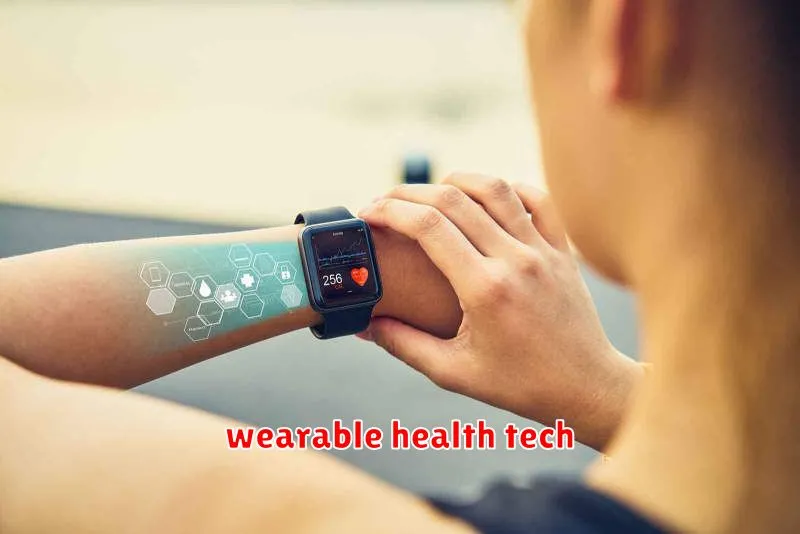In the ever-evolving landscape of healthcare, wearable electronics have emerged as a transformative force, empowering individuals to take control of their well-being. From fitness trackers to smartwatches, these devices offer a wealth of data and insights that can revolutionize our understanding of our bodies and optimize our health. In 2024, the possibilities for health monitoring with wearable electronics are more exciting than ever before.
This ultimate guide will delve into the world of wearable electronics for health monitoring, exploring the latest advancements, key features, and benefits of these innovative devices. We’ll examine the diverse range of wearables available, including smartwatches, fitness trackers, health monitors, and even clothing integrated with sensors. Whether you’re a fitness enthusiast, a health-conscious individual, or simply curious about the future of healthcare, this comprehensive guide will equip you with the knowledge to make informed decisions and harness the power of wearable technology for a healthier and more fulfilling life.
Smartwatches
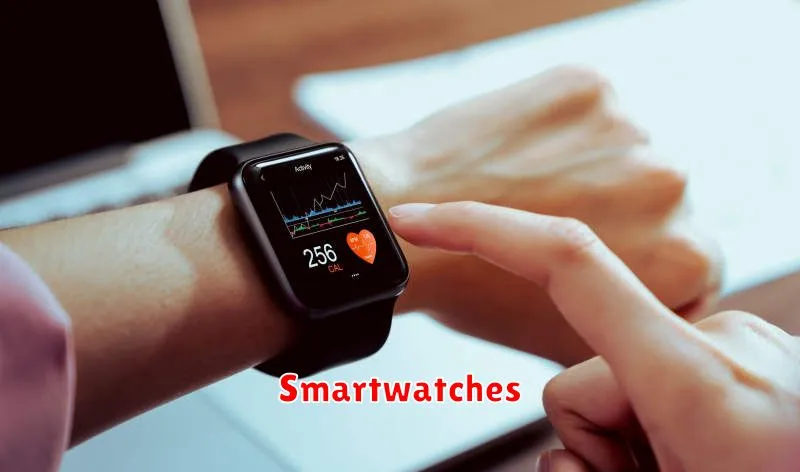
Smartwatches have become increasingly popular as a tool for health monitoring in recent years. These devices offer a variety of features that can help you track your activity, sleep, heart rate, and even blood oxygen levels. Some smartwatches also offer advanced features such as ECG monitoring and fall detection.
When choosing a smartwatch for health monitoring, there are a few key factors to consider. These include the following:
- Accuracy: Look for a smartwatch that has been proven to be accurate in its measurements.
- Features: Consider what features are important to you, such as heart rate monitoring, sleep tracking, or GPS.
- Battery life: Choose a smartwatch with a battery life that meets your needs.
- Comfort and design: Make sure the smartwatch is comfortable to wear and has a design that you like.
- Compatibility: Ensure the smartwatch is compatible with your smartphone.
With so many options available, it can be overwhelming to choose the right smartwatch for your needs. However, with a little research, you can find a device that can help you track your health and stay motivated to reach your fitness goals.
Fitness Trackers
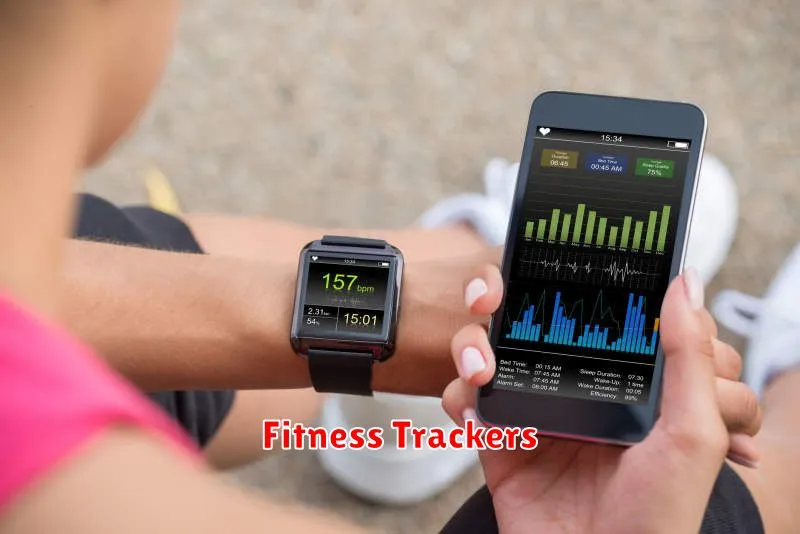
Fitness trackers are one of the most popular types of wearable electronics, and for good reason. They can track your steps, distance, calories burned, sleep patterns, and heart rate. This data can help you stay motivated and make informed decisions about your health and fitness.
Benefits of fitness trackers:
- Increased motivation and accountability
- Improved fitness performance
- Better sleep quality
- Increased awareness of your health
Types of fitness trackers:
There are many different types of fitness trackers available, from basic pedometers to advanced smartwatches. Here are a few of the most popular types:
- Activity trackers: These devices track your steps, distance, calories burned, and sleep patterns. They typically come in the form of wristbands or clip-on devices.
- Smartwatches: These devices combine the functionality of activity trackers with a variety of other features, such as notifications, music playback, and mobile payments.
- GPS trackers: These devices track your location and can be used for activities such as running, cycling, and hiking.
- Heart rate monitors: These devices track your heart rate and can be used to monitor your fitness level and cardiovascular health.
Choosing the right fitness tracker:
When choosing a fitness tracker, it’s important to consider your individual needs and preferences. Ask yourself questions such as:
- What features are most important to me?
- What is my budget?
- What is my activity level?
- What type of device am I comfortable wearing?
Once you have a good understanding of your needs, you can start researching different fitness trackers and comparing their features, price, and reviews.
Using a fitness tracker effectively:
To get the most out of your fitness tracker, it’s important to use it consistently and set realistic goals. Don’t be afraid to experiment with different features and find what works best for you. You can also use your fitness tracker to connect with friends and family and motivate each other.
Fitness trackers are a great way to stay motivated and improve your health. With so many different options available, you’re sure to find a fitness tracker that fits your needs and helps you reach your goals.
Heart Rate Monitors
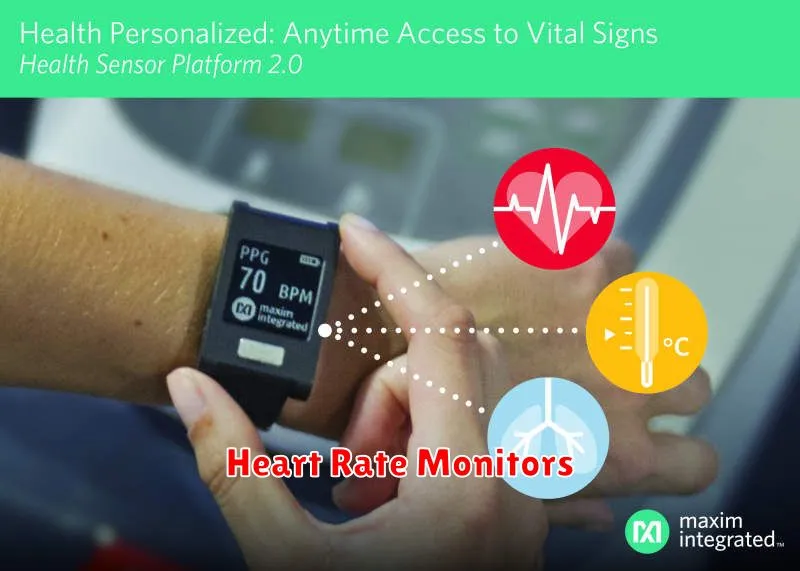
Heart rate monitors are one of the most popular wearable electronics for health monitoring. They use a variety of technologies to track your heart rate, including optical sensors, electrical sensors, and even radar. They can provide valuable insights into your overall health and fitness, including your resting heart rate, heart rate variability, and maximum heart rate.
There are many different types of heart rate monitors available, from simple wristbands to more advanced chest straps. Wrist-based heart rate monitors are convenient and easy to use, but they may not be as accurate as chest straps, especially during intense workouts. Chest straps are more accurate, but they can be less comfortable to wear.
Heart rate monitors can be used for a variety of purposes, including:
- Tracking your fitness progress: Heart rate monitors can help you track your progress during workouts and ensure you’re exercising at the right intensity.
- Monitoring your heart health: Heart rate monitors can help you detect any irregularities in your heart rate, such as arrhythmias.
- Managing stress: Heart rate monitors can help you track your stress levels and identify triggers.
- Improving your sleep quality: Heart rate monitors can track your heart rate while you sleep, which can provide insights into your sleep quality.
If you’re looking for a wearable electronic to improve your health and fitness, a heart rate monitor is a great option. There are many different models available, so you can choose one that fits your needs and budget.
Sleep Trackers
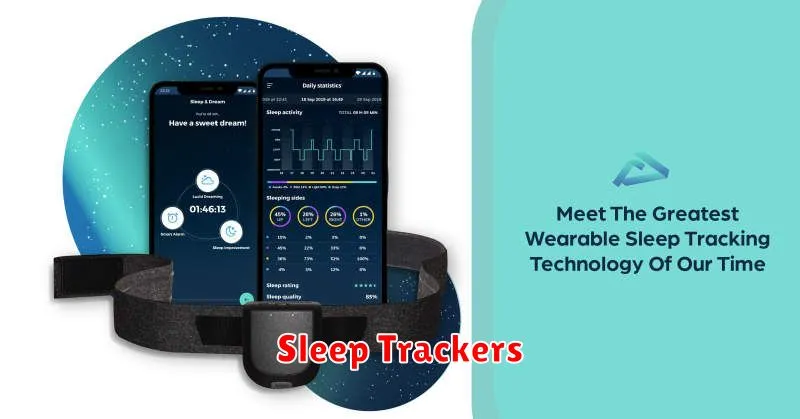
Sleep trackers are wearable devices that monitor your sleep patterns and provide insights into the quality and duration of your sleep. These devices typically use sensors to track movement, heart rate, and breathing patterns, and some even monitor blood oxygen levels and snoring.
The data collected by sleep trackers can help you understand how much sleep you need, identify any sleep disorders, and make changes to your sleep habits to improve your overall health. Here are some benefits of using a sleep tracker:
- Improved Sleep Quality: By providing insights into your sleep habits, sleep trackers can help you identify and address factors that may be affecting your sleep quality.
- Early Detection of Sleep Disorders: Sleep trackers can help detect potential sleep disorders like insomnia, sleep apnea, and restless leg syndrome by analyzing sleep patterns.
- Increased Awareness of Sleep Habits: They offer valuable information on sleep duration, sleep stages (REM, light, and deep sleep), and sleep efficiency. This awareness can help you make adjustments to your bedtime routines and lifestyle.
- Personalized Sleep Recommendations: Many sleep trackers offer personalized recommendations based on your sleep data, suggesting ways to improve your sleep quality.
When choosing a sleep tracker, consider factors such as:
- Accuracy and Reliability: Look for trackers with proven accuracy and reliability in measuring sleep parameters.
- Features: Consider the features that are most important to you, such as heart rate monitoring, blood oxygen level tracking, and sleep stage analysis.
- Battery Life: Choose a tracker with a long battery life to avoid frequent charging.
- Comfort and Fit: Ensure the tracker is comfortable to wear and fits securely on your wrist.
Remember, sleep trackers are just tools. They can provide valuable information about your sleep but shouldn’t replace professional medical advice. If you have concerns about your sleep, consult with a healthcare professional.
Blood Pressure Monitors
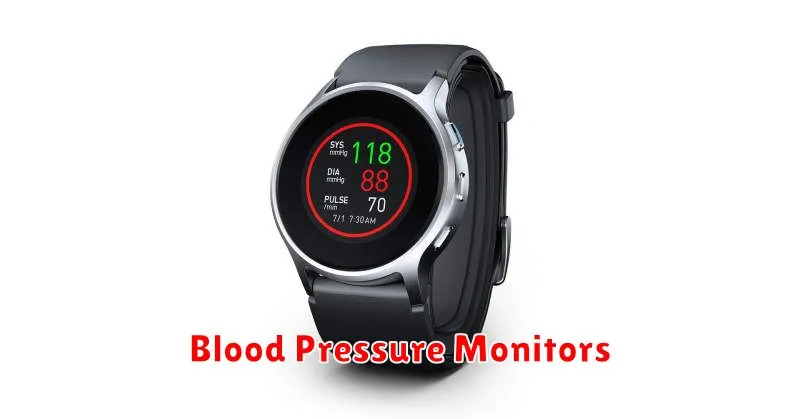
For those concerned about heart health, wearable blood pressure monitors offer a convenient way to track your readings. These devices come in different forms, including wristbands and upper arm cuffs, and can be worn throughout the day to capture a detailed picture of your blood pressure fluctuations.
While many smartwatches incorporate blood pressure monitoring, it’s essential to recognize that these readings should be taken with a grain of salt. Wrist-based monitors, particularly those integrated into smartwatches, are not as accurate as traditional cuff-based methods. For accurate diagnoses, consulting with a healthcare professional and using clinically approved devices remains crucial.
However, wearable blood pressure monitors can still be valuable tools for personal health tracking and monitoring. They can help identify potential trends, empower individuals to make lifestyle changes, and serve as a reminder to schedule regular checkups with their doctor. The key is to use these devices as complements to traditional medical care and not as replacements for professional medical advice.
ECG Monitors
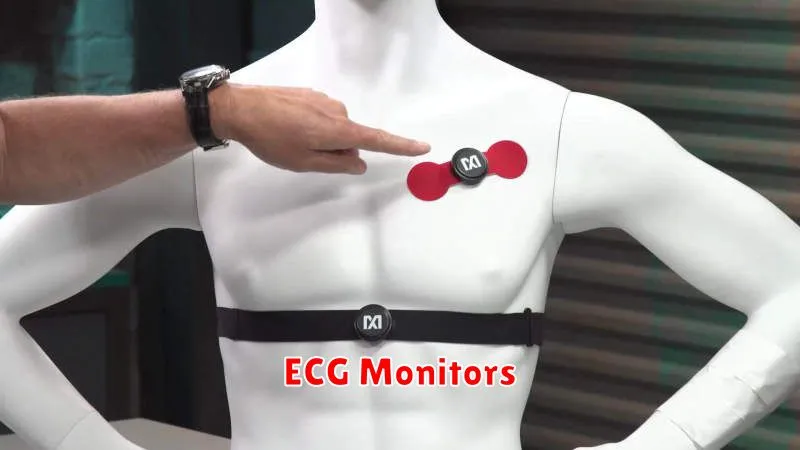
Electrocardiogram (ECG) monitors are wearable devices that track your heart’s electrical activity. They can be used to detect a variety of heart conditions, including arrhythmias, heart attacks, and heart failure.
ECG monitors are becoming increasingly popular as a way to monitor your heart health, particularly with the rise of wearable technology. They can be used to detect abnormal heart rhythms, which can be a sign of serious health problems.
These devices are typically worn on the chest or wrist and transmit data to a smartphone or other device for analysis.
There are two main types of ECG monitors:
Holter monitors are worn for a longer period of time, usually 24 hours or more. They are used to record your heart’s activity over a longer period of time, which can help to identify patterns that may not be apparent in a single ECG reading.
Event monitors are worn for a shorter period of time, usually a few days or weeks. They are activated when you feel symptoms, such as chest pain or shortness of breath, which allows your doctor to see what’s happening to your heart during these episodes.
ECG monitors are a valuable tool for monitoring your heart health. They can help to detect problems early, which can lead to earlier treatment and better outcomes. If you are concerned about your heart health, talk to your doctor about whether an ECG monitor is right for you.
Blood Glucose Monitors
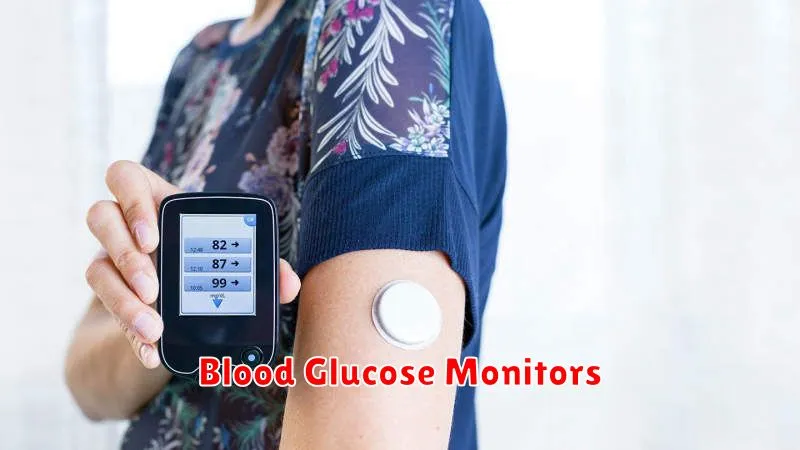
For individuals with diabetes, managing blood sugar levels is crucial for overall well-being. Thankfully, wearable blood glucose monitors have emerged as a game-changer, offering continuous and convenient monitoring. These devices use a variety of technologies, such as continuous glucose monitoring (CGM), to track glucose levels throughout the day and night. By providing real-time data, they empower individuals to make informed decisions about their diet, exercise, and medication.
CGM systems typically involve a small sensor inserted under the skin, which measures glucose levels in the interstitial fluid. This data is then transmitted wirelessly to a receiver or smartphone app, allowing users to monitor their blood sugar trends and receive alerts for potential high or low levels. Some advanced CGM systems even offer predictive alerts, warning users about potential fluctuations before they occur.
Beyond continuous monitoring, wearable blood glucose monitors offer several other advantages. They can be used to track the effectiveness of different treatments, identify patterns in blood sugar fluctuations, and promote better diabetes management. This real-time data can also be shared with healthcare providers, enabling them to make more informed decisions and optimize treatment plans.
Pulse Oximeters
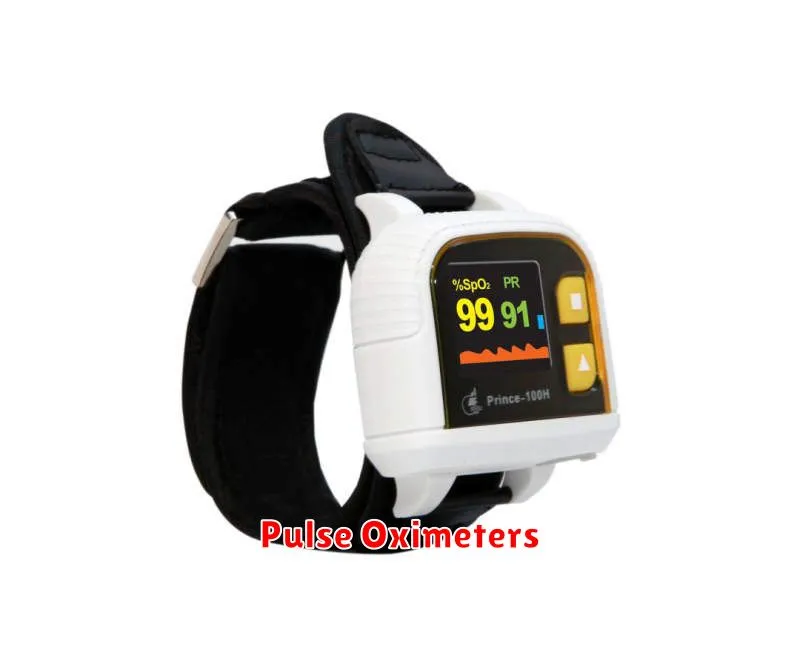
Pulse oximeters are wearable devices that measure the oxygen saturation in your blood. They work by shining a light through your finger or earlobe and measuring how much light passes through. This information is then used to calculate the percentage of oxygen in your blood, which is called SpO2.
Pulse oximeters are becoming increasingly popular for health monitoring, especially during the COVID-19 pandemic. They can be used to detect early signs of respiratory problems, such as hypoxemia, which is a condition where there is a low level of oxygen in the blood. They can also be helpful for people with chronic conditions like asthma and COPD, as they can monitor their oxygen levels and help them adjust their treatment accordingly.
There are many different types of pulse oximeters available, including fingertip pulse oximeters, which are the most common type, and wrist-worn pulse oximeters, which are becoming more popular. Some pulse oximeters also include other features, such as a heart rate monitor or a sleep tracker.
If you’re considering using a pulse oximeter for health monitoring, it’s important to talk to your doctor first. They can help you choose the right device for your needs and make sure you use it safely.
Smart Clothing
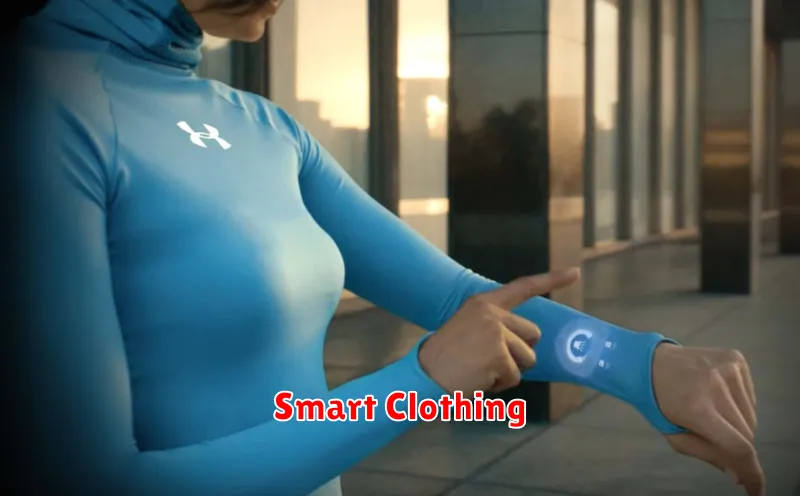
Smart clothing, also known as e-textiles, is a revolutionary advancement in wearable technology. It seamlessly integrates electronic components and sensors into clothing, providing real-time health monitoring and data analysis. These garments can track various physiological parameters, including heart rate, body temperature, sleep patterns, and activity levels. The data collected can be analyzed to provide personalized insights and recommendations for improving health and well-being.
Here are some of the key features of smart clothing for health monitoring:
- Biometric Sensors: Embedded sensors monitor heart rate, blood pressure, body temperature, and other vital signs.
- Activity Tracking: Sensors can detect steps taken, distance traveled, calories burned, and sleep patterns.
- Data Analysis and Feedback: The collected data is processed and analyzed to provide personalized insights and recommendations.
- Communication and Connectivity: Smart clothing can communicate wirelessly with smartphones, tablets, and other devices to share data and receive alerts.
Benefits of Smart Clothing for Health Monitoring:
- Improved Health Management: Continuous monitoring and early detection of health issues.
- Personalized Insights: Tailored recommendations for fitness, nutrition, and sleep.
- Enhanced Safety and Security: Alerts for emergencies and potential health risks.
- Increased Motivation: Data visualization and progress tracking for motivation and goal achievement.
Smart clothing is still in its early stages of development, but its potential for revolutionizing healthcare is immense. As the technology continues to advance, we can expect to see even more innovative and sophisticated applications in the future.
Hearing Aids
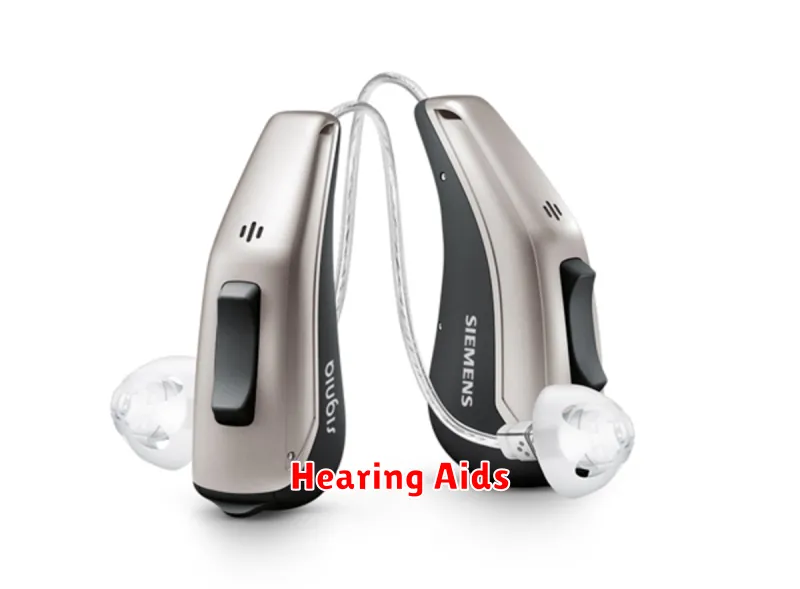
Hearing aids are becoming increasingly sophisticated, incorporating features beyond just amplifying sound. They are now capable of monitoring your hearing health and even detecting potential health issues. Many modern hearing aids come equipped with built-in sensors that can track your activity levels, sleep patterns, and even heart rate. This data can be valuable for identifying potential problems early on and improving overall health management.
Some hearing aids also feature noise-canceling technology, which can filter out distracting background noise and improve clarity of conversation. This can be particularly helpful for individuals who experience difficulty hearing in noisy environments.
Beyond basic hearing amplification, some hearing aids now offer connectivity features, allowing them to connect to your smartphone or other devices. This enables you to stream audio directly to your hearing aids, adjust settings remotely, and even use your hearing aids as a hands-free headset for phone calls.
The integration of health monitoring capabilities in hearing aids signifies a significant advancement in wearable technology. They offer a convenient and discreet way to track your hearing health, potentially detecting early signs of hearing loss or other health issues. As technology continues to evolve, we can expect even more sophisticated features to be incorporated into hearing aids in the future.

